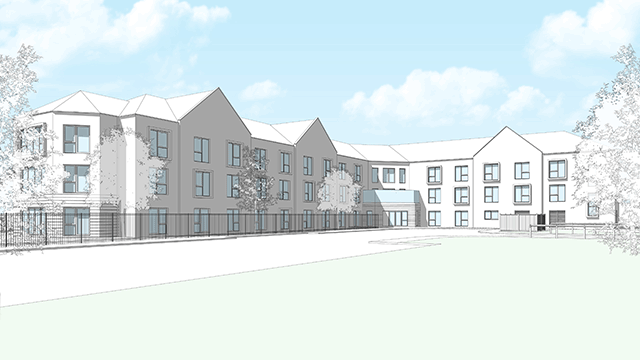
Islington Council has given the go-ahead for Delancey’s proposals to bring forward a 200,000 sq ft science and technology building in London’s Knowledge Quarter, N1.
The decision was made in line with the officers’ recommendation last week.
The scheme, which will have a gross development value in excess of £400m, has been designed by Kohn Pedersen Fox and will be delivered by Delancey.
The site at 176-178 York Way consists of a former petrol station and car dealership, a car wash, two-storey buildings and other structures.
Delancey is set to transform the brownfield land into 130,000 sq ft of research and laboratory space alongside 13,000 sq ft of affordable workspace. The remaining space will include a mixed-use community and events facilities.
The building will be able to adapt to changing market demand and accommodate a range of occupiers, with options to alter the proportions of laboratory and office space.
Nathan Watt, development director at Delancey, said: “The development will have broad appeal, bolstering the forecast undersupply in London’s Knowledge Quarter, and activate York Way to become a focal point for this part of London.”
Dan Dawe, director of investment at Delancey, said: “Following a process of strategic land assembly, innovative design, and securing planning, we are in a position to bring forward grade-A commercial workspace in King’s Cross.
“This is a response to the structural supply shortage of prime commercial office space forecast to be delivered between 2027 and 2029 in London.”
The developer expects to begin work on site next year, with construction due for completion in 2028.
Much of the committee debate over the scheme revolved around sustainability, access to community spaces and an alleged lack of consultation with the developers of the adjoining plot at 57-65 Randell’s Road.
Green Party councillor Benali Hamdache reminded Delancey that “there are no life sciences on a dead planet”. The statement followed discussions of the building’s sustainability, as the new building would reduce carbon emissions by 11% rather than the 35% recommended.
The councillor also questioned whether prioritising urban greenery on terraces over solar panel installations was “the right balance to strike planetarily”, but discussion went no further after it was established the urban greenery is a requirement on terraces.
Other debates surrounding the use of community spaces included in the project, and resulted in Delancey extending access to community spaces from 26 days a year for 10 years to 40 days a year for 25 years.
Planning officers were satisfied that consultation with the adjoining plot owners met statutory requirements, so requests for a deferral from the owners of 57-65 Randell’s Road were dismissed. However, Labour councillor Paul Convery recommended that the two parties “come to an agreement, which I think involves money”.
He added: “I don’t use this phrase very often. I’m very excited today about the prospect of redeveloping this site. I should say of the applicant that I think they’ve done a very good job engaging with the community residential neighbours. They actually went door knocking on the flats. We were all surprised at how positive a lot of residents were, fully cognisant of the scheme. There’s an awful lot of enthusiasm for developing this little nugget of land.”
Image © Kohn Pedersen Fox
Send feedback to Evelina Grecenko
Follow Estates Gazette










